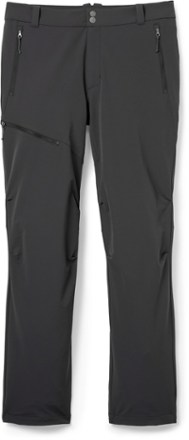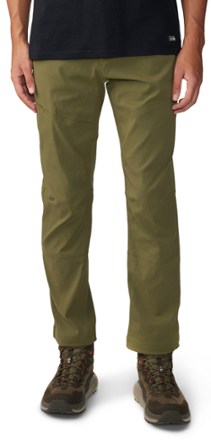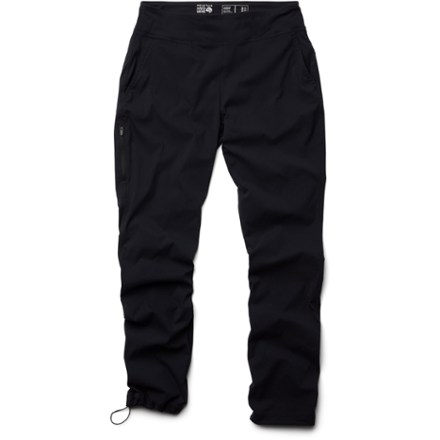When the season winds down, it's tempting to toss your camping and hiking gear aside and forget it. You know, of course, that a few care and maintenance chores might be in order, but what fun is that? And gear that looks a little scruffy is more legit, right?
We get it. But, while it's true that quality gear is indeed rugged, nothing lasts forever. Quality gear can command a premium price, so caring for it helps protect your investment—and the planet for that matter, because well-cared-for gear is likely to endure longer without needing replacement. Take good care of your gear and it will take good care of you.
Some folks enjoy the ritual of gear care—we applaud your dedication and have provided links to articles (many with videos) that offer detailed care steps. But if you're more the low-maintenance type, this article also highlights several of the basic tasks to help you and your gear enjoy a longer, healthier relationship. Here, we focus on cleaning and storing camping, hiking and running gear, including tents, sleeping bags and bags, footwear and rainwear. For more tips, visit our full Care & Repair library of articles.
As it turns out, essential gear care boils down to two simple rules:
1. Clean your gear and
2. Store it properly
Gear care rule #1: Keep it clean(er)
While your outdoor gear is indeed made to get a little dirty, all that dirt wears on it over time, impairing performance and shortening its lifespan. Grit left in place works a little like the grit in sandpaper, gently abrading fibers in materials whenever you're using or wrangling your gear. Sweat and body oils impair performance in a slightly different way, gumming up high-performance fabrics and promoting the growth of bacteria, mold and mildew.
It's a good idea to give your gear a yearly cleansing. And the end of the season (whenever that date is for you) is an ideal time to do so. Below are two general tips for cleaning any type of gear:
- Use the right care products, because a lot of household cleaners have additives that aren't great for high-performance gear. (If you use household products, then look for ones that are fragrance-free and additive-free.) Specialty cleaning and care products might be pricier, but they're your best choice for the job.
- Carefully read and follow product makers' recommendations, because they know their gear best and have taken pains to explain the correct way to care for it. Occasionally, that might mean deviating from what's in a general care article (including ours).
Gear that needs a deep cleaning
Any gear that spends a lot of time in contact with the ground, like hiking boots or a tent, deserves a good brushing or scrubbing. The same is true of gear that's near your sweat-soaked self. Most of us launder stinky hiking clothing after every trip, but what about our sleeping bag and outerwear?
How to Wash a Sleeping Bag: Here, you'll find the process for both machine and hand washing. One strategy for reducing how often you need to wash a bag is to use a sleeping bag liner, though that adds both cost and weight (but also a bit of warmth). If bag washing is intimidating, consider using a professional gear service.
Video: How to Clean a Sleeping Bag
How to Clean a Tent: Start by brushing dirt off the outside, and shaking, sweeping or vacuuming out the inside. The same steps are a good habit to adopt in between trips, too.
How to Clean a Pack: Not surprisingly, the steps in this article are similar to tent cleaning. At a minimum, shake or vacuum out crumbs and dirt from pockets and compartments.
DWR Care on Rainwear: The durable water repellent (DWR) finish on your rainwear needs regular replenishment. Though a jacket's DWR finish is distinct from its waterproof/breathable material (like GORE-TEX® fabric) that's primarily responsible for keeping you dry on the trail, maintaining the integrity of DWR is key to ensuring any rainwear performs as it should. Renewing DWR involves laundering first, so any rainwear cleaning often calls for this two-step process.
How to know if your DWR needs a refresh: If raindrops bead up and roll off your jacket, you're good. If the surface fabric "wets out" (absorbs drops), then it's time for DWR renewal.
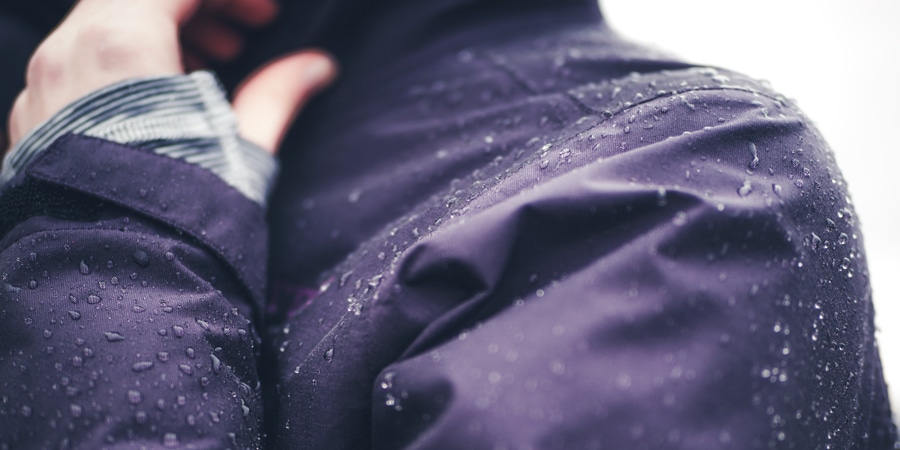
Our article on How to Care for GORE-TEX® Rainwear offers specific cleaning advice for that material. The process isn't the same for all high-tech waterproof/breathable fabrics, so always read rainwear care instructions carefully.
One could also argue that rainwear care at the end of summer is actually more of preseason fall care. Whatever you call it, though, now is still a great time to do it.
How to Clean Hiking Boots: Check out this article for a detailed guide on how to brush, scrub, dry and store your hiking boots. (Heat sources can be harmful, so air-dry boots instead.) You'll also learn how to condition leather hiking boots that appear dry and cracked.
If you hike in trail runners or have some funky road runners, How to Clean Running Shoes offers tips for that type of footwear.
Also, get into the habit of brushing dirt and soil off hiking and running shoe soles between trips to improve traction and prevent seed transport between ecosystems.
How to Clean a Hydration Bladder: This article covers how to thoroughly clean your hydration bladder, including what cleaning solution to use and how to properly rinse, drain and dry it. Cleaning a reservoir once a season is a minimum—after every trip is the aspiration. If you fill your reservoir exclusively with clean water and you thoroughly dry it between trips, you can go a little longer between cleanings.
Gear care rule #2: Store it properly
Gear might be made to withstand moisture, heat and cold, but it's not utterly invincible against the elements, especially if we give them time to do some damage.
A lot of gear is also made to pack compactly for the trail. But storing it smooshed together over time is a little like wearing a too-small pair of shoes day after day. Eventually, your feet are going to complain.
Follow these guidelines whenever you store gear:
Gear-specific storage advice
The articles linked to below offer a range of tips for your tent, sleeping bag and sleeping pad, three camping items that can take up a lot of your gear budget and storage space.
How to Store a Tent: The most important tip in this article is that dryness matters. Stashing a damp tent in a stuff sack promotes mold and mildew growth. It can also trigger "hydrolysis," the gradual breakdown of waterproof coatings over time by, ironically, moisture. After trips, set the tent up in a dry, covered space for a day or two to allow it to fully air out and dry out.
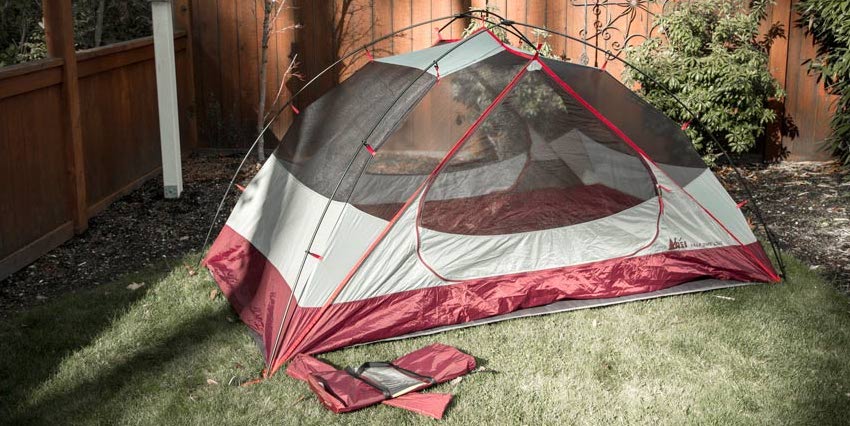
How to Store a Sleeping Bag: Compression is hard on down and synthetic insulations. Free your bag from its stuff stack, dry it thoroughly, loosely put it in an oversized mesh or cotton bag (typically the one that came with your bag), and store it in a dry, cool place. Learn more tips in this article, including using an oversized bag instead of your stuff sack for home storage.
How to Store a Sleeping Pad: Before putting your sleeping pad away for the season, wash it to make sure body oils and grime don't build up. Also, dry both the inside and outside to prevent mold growth. Lower the moisture in your pad by inflating and deflating it several times. (Pro tip: Set a hair dryer on low and hold it directly against or over your pad's valve to inflate it.)
Batteries: Batteries occasionally leak and cold temps drain power, so a good fall/winter storage habit is to remove them from electronic gear and to keep them in a warm place.
Care and Cleaning Products
Related Articles
How to Fix a Sleeping Bag Zipper
How to Waterproof Hiking Boots
How to Care for Leather Hiking Boots


